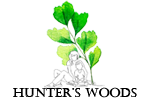Montessori Science
Useful and Harmful Materials: Lesson and Worksheets
Elementary science lesson and four free live/printable worksheets on useful and harmful materials and the importance of symbols on product labels.
Contents:
- Examples of useful and harmful materials
- Is broken glass useful or harmful?
- Things can be both useful and harmful
- What we actually do with them matters
- Are candy wrappers useful or harmful?
- Things that cannot be reused
- Things made of harmful chemicals
- Importance of labels in identifying useful and harmful materials
- Warning symbols / hazard symbols
- Food labels
- Recyclable
The worksheets you’ll find in the following sections are “live worksheets” — they can be answered right on this page, with a button that lets you find out your score or email your answers to your teacher. You can also get printable (PDF) versions of all the worksheets on this page here:
This is not just a lesson for science class — it is also a topic that is very practical!
Every day we encounter lots of different things in the environment — whether at home, in school, or elsewhere — and it’s very important that we are able to tell which of those things we can use without any worry, and which ones we have to be extra careful with because they are made of things that can potentially harm us.
What’s an example of something useful?
I’m sure you can think of many things immediately!
The pots and pans we use for cooking, the umbrella that protects us from both the rain and the hot sun, the chairs we sit in at school, the chargers for our phones and computers…the list goes on and on! I’m pretty sure that if we try, we would be able to list down hundreds and hundreds of things that are of use to us.
What’s an example of something harmful?
If you can’t think of one right away, try to think of this instead: what are the things that you’ve been told by your parents to stay away from?
For example, if you’ve ever accidentally broken something made of glass, I’m sure the adults in your house told you to stay away first while they put away the broken pieces. That’s because those shards (or broken pieces) of glass are so sharp that they can cut your skin. If you step on one, it could cut the sole of your foot and cause it to bleed. That would be painful! Even worse, if a shard of glass remains in your foot — maybe because you didn’t notice that it was still there, or you accidentally drove it deeper into your skin by walking on your wounded foot while the glass was still stuck to it — the glass splinter could cause an infection. That would definitely be a problem!
So, generally, those things that you are told to stay away from are the ones that can cause you harm.
Now, you have to keep in mind that things don’t have to be useful OR harmful. That is, things can actually be both. Something that is useful can be harmful and something that is harmful can be useful.
(I know that fact isn’t much use in science tests — where you are asked to decide if something is useful or harmful — but it’s actually really important that you learn that things aren’t always black or white! That way if you ever become a teacher, you can listen to your students if they have a reason for answering the way they did.)
A lot of the time, something can be useful BUT it can cause harm…
- if it is used improperly,
- if it is used carelessly, or
- if it deteriorates — if its condition is not as good as when it was new or fresh
One good example of this is the medicine that we take when we are ill. They are useful because they can help us get better. But there are situations where they might harm us instead.
- For example, paracetamol is something that we take when we have fever. But you should always take a look at the expiration date — the last day on which it is still safe — before taking any medicine. If, for example, the paracetamol you have at home turns out to have expired two or three years ago, not only might it not work anymore, it might have gotten contaminated by other things over time and might actually cause you to get even sicker.
- Allergy meds can help our allergy symptoms (like itchiness or runny nose) go away. But many allergy meds also have a side effect: they might make you sleepy. That’s why it’s always better if you take them at night, before you go to sleep, so that their side effect — making you sleepy — will come at a handy time and NOT happen during daytime when you have many things to do. There are even allergy meds that make you SO drowsy, you should be extra careful not to take them before doing things like driving a car or operating a machine or basically anything that needs alert attention.
A knife is useful for slicing things but if you use it when you still don’t know how, or even if you’ve already been taught how to use a knife but you’re careless when you’re using it, it could cut your fingers.
A pencil is useful for writing and drawing but if you use it as a sword while playing, and you accidentally poke someone in the eye with it, your playmate could actually go blind!
Fertilizers and pesticides are useful for keeping our plants healthy but if we accidentally inhale or ingest them, they can be poisonous to us.
Alcohol, disinfectants, paints, oils, and liquid petroleum gas (LPG) all have uses in our home but are flammable – meaning they can easily catch fire – and so we must be extra careful to keep them away from flames.
Even the school chair that we mentioned when we were coming up with examples of useful things can become harmful under certain conditions. For example, if a typhoon blew through your school and got your chairs all wet, it might have caused your chairs to become moldy. Mold can cause health problems, especially if it gets into your lungs or other organs.
Things can also be useful or harmful depending on what we actually do with them.
For example, if you just throw away empty glass jars, they can be considered harmful because they will just add to the waste that goes into landfills – they’re harmful to the earth. But, actually, empty glass jars don’t have to be thrown away. They can be reused to store food or ingredients, or they can be repurposed into other things like vases or pencil holders. It’s actually quite easy to keep a glass jar useful because you don’t have to do anything special to them – you just have to wash them thoroughly and you can reuse or repurpose them right away.
How about candy wrappers? Are candy wrappers useful or harmful?
You’ve probably read or been told that plastic candy wrappers can be turned into things like bags or curtains. This is technically true BUT it will actually take quite a lot of time and effort on your part to turn them into a bag or a curtain. You’ll have to wash them or wipe them clean. They’re small so you’ll have to collect enough of them. And then you’ll have to find a way to stick them together. If you’re going to turn them into a bag, you’ll have to find a way to make them strong enough to hold things, probably by sewing them into another material. If you’re going to make them into a curtain – well, you’ll have to keep in mind that plastic doesn’t let air in, so is it really the best material for curtains? Also, do you actually know somebody who routinely makes things out of candy wrappers? I would say probably 99.99% of people just throw them away. So, what I’m trying to say is, if we’re going to be practical about it, candy wrappers are NOT actually useful.
(In fact, I would suggest just not eating candy in the first place. They aren’t healthy and their wrappers just harm the environment.)
Again, it depends on what we actually – not just theoretically – do with them.
Some things are harmful once they have been used up and, for various reasons, cannot be used again.
Batteries that are non-rechargeable may be harmful if they are already drained and not disposed of properly because they can leak harmful chemicals such as lithium, lead, and mercury.
Medical waste such as used syringes and masks cannot be reused because they might spread illness from one person to another. For that reason, once they have been used once, they have to be thrown away, which adds to the trash burden of the earth.
Finally, there are things made of harmful chemicals that we use to clean the house or rid it of pests. They are harmful to rats and roaches and dirt and gunk but they can also be harmful to humans so they have to be used very carefully and sparingly. Examples include:
- Muriatic acid – great for cleaning the bathroom but can cause headaches, acid burns, damage to the lungs and respiratory tract, and blindness if accidentally splashed into the eyes
- Ant and roach chalk and other insecticides – kills cockroaches and insects but can cause vomiting and stomach pains in overexposed humans
- Moth balls – can keep away rats but can be toxic to humans, especially if children mistake them for candy and accidentally eat them
You can read more about household items that can be poisonous to humans (especially children) HERE.
Importance of Labels in Identifying Useful and Harmful Materials
Hazard symbols, or warning symbols, help us identify those things that can be harmful to us. They are placed on product labels so we can easily tell that we need to keep away, or that a thing needs to be handled very carefully.
Common hazard symbols placed on product labels include those that indicate if something is:
- Poisonous
- Flammable
- Corrosive
- Explosive
- A health hazard
- An environmental hazard
In addition, certain types of food have special food labels that can help us tell what is in them – or what is not in them – so that we can decide if it’s okay for us to eat them or not.
- Halal – A halal certification tells Muslims that that food is okay for them to eat.
- Kosher – If food is kosher, it is okay for Jewish people to eat.
- Allergens – Labels can tell us if a certain food contains nuts, lactose, gluten, or other common allergens so that people who are allergic to them can avoid eating them.
Finally, labels can also tell us if something can be recycled. Look out for the recycling symbol!
Put your mouse pointer/cursor above the symbols to reveal what they mean. For mobile users, tap on the symbol to reveal the same information.
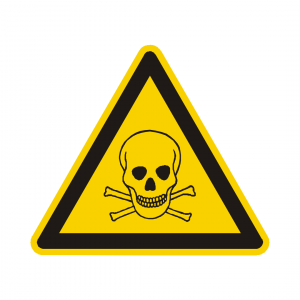
Poisonous
Can kill or cause severe illness
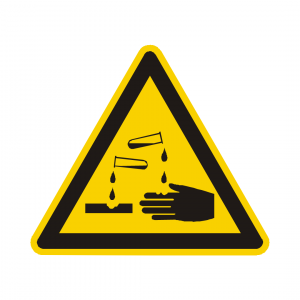
Corrosive
Can wear away or destroy little by little

Flammable
Can catch fire easily

Explosive
Can explode
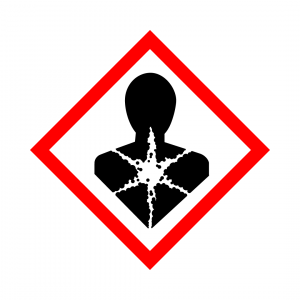
Health Hazard
Can cause illness in humans now or in the future
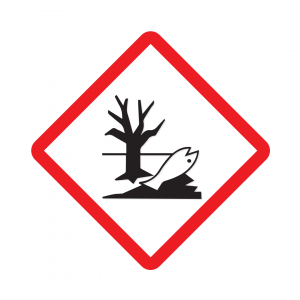
Environmental Hazard
Can leak chemicals or destroy the environment in other ways, also causing harm to those living in that environment
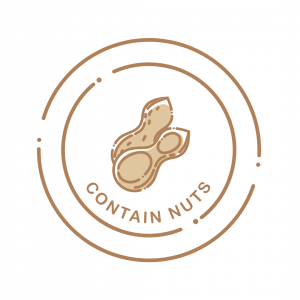
Contains nuts
Should not be eaten by people who are allergic to nuts
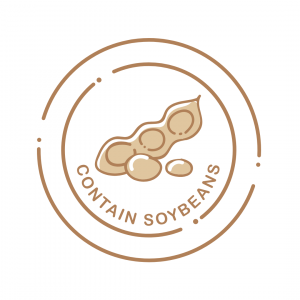
Contains soybeans
Should not be eaten by people who are allergic to soy
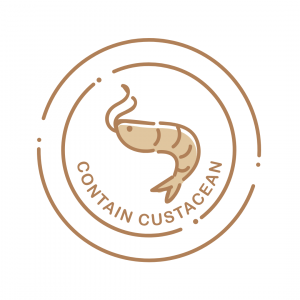
Contains crustaceans
Should not be eaten by people who are allergic to crustaceans such as shrimp and crab

Halal
Okay for Muslims to eat

Kosher
Okay for Jewish people to eat
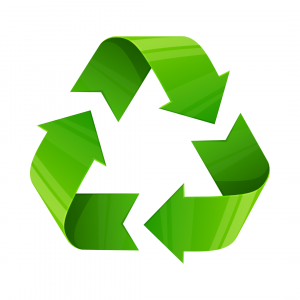
Recyclable
Can be recycled
Worksheets
The worksheets below are interactive “live worksheets” — they can be answered and corrected/submitted right on this page.
Printable (PDF) versions of these worksheets are also available for free download — just click on links provided before each worksheet.
Note on the Worksheets
You can reduce the size of the worksheet by zooming out your browser screen. For Windows users, scroll down the mouse wheel while pressing the Ctrl key in your keyboard. If there are any errors/glitches, just refresh and try again.
Useful and Harmful Materials Grade 4 / Grade 5
You can get a printable copy of this worksheet here: Useful and Harmful Materials Grade 4 (PDF)
liveworksheets.com
Useful and Harmful Materials Grade 5
You can get a printable copy of this worksheet here: Useful and Harmful Materials Grade 5 – Worksheet 1 (PDF)
liveworksheets.com
Useful and Harmful Materials Grade 5
You can get a printable copy of this worksheet here: Useful and Harmful Materials Grade 5 – Worksheet 2 (PDF)
liveworksheets.com
Useful and Harmful Materials: Importance of Labels and Symbols
You can get a printable copy of this worksheet here: Useful and Harmful Materials Grade 5 – Importance of Labels (PDF)
liveworksheets.com
Did you enjoy these useful and harmful materials worksheets? See all our free printable and interactive worksheets here:
LEARNING AND GROWING
Learning / Education
Financial Education for Kids
Inspiration for Kids
LEARNING ABOUT THE WORLD
Books
Environmental Issues
Philippine Heritage and Culture
World History, Arts and Culture
